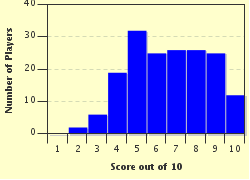Quiz Answer Key and Fun Facts
1. This photo is of the Jacqueline Kennedy Onassis Reservoir within New York City's Central Park. This body of water is one of seven lakes in total within Central Park.
2. This park began life in tragic circumstances. Once a business and residential area, it was the site of Allied bombing in World War II. Established in 1954, the park has commemorative ceremonies every year on August 6th. Now encompassing a park and a museum, where would you find Peace Park?
3. Which of these large urban parks has a herd of deer happily living within its boundary?
4. The mosaic dragon at the entrance to Barcelona's Parc GuŽll is just the beginning of this park's artistic delights. Which architect, well known for his more eccentric designs, was a co-creator of this imaginative and inspiring park?
5. You've arrived at Lumphini Park in Bangkok. It's an oasis away from the hustle and bustle of the commercial district in one of Southeast Asia's most populated cities. What can you NOT do in Lumphini Park?
6. Just three kilometres from Melbourne's Central Business District is Albert Park and its lake. What event has been held amidst the tranquil environs of Albert Park since 1996?
7. What every urban park needs is a palace. This park has its own palace commissioned by Marie Medici in the 1600s. Created on the site of a former hotel, what is this park called?
8. The Presidio of San Francisco, California, is a lovely parkland between San Francisco Bay and the Pacific Ocean. Now it's all public parkland (including the historic Coast Guard House in the photo), but what was another of its functions until 1989?
9. Stanley Park in Vancouver, Canada, has many attractions including a 22 km sea wall used by cyclists and walkers, an aquarium, miniature railway, tennis courts, a lake and more. Did Stanley Park ever have a zoo?
10. Since the late 1600s, a groomed area (in the photo) has been 'the place' to be seen riding a horse in London. Located within Hyde Park, this bridle path has a name stemming from its original French name. What is this area called?
Source: Author
Tizzabelle
This quiz was reviewed by FunTrivia editor
stedman before going online.
Any errors found in FunTrivia content are routinely corrected through our feedback system.


